Stuffed cabbage leaves, also known as holishkes or prokes, may just be the ultimate comfort food. A slowly cooked, savory cold-weather dish, stuffed cabbage is a classic, and many families seem to have their own way of making it. Today, I’m sharing a traditional Jewish stuffed cabbage recipe that’s a favorite for my family.
Stuffed cabbage is one of those nostalgic dishes that brings back memories of family, tradition, and comfort. While I didn’t grow up with a Jewish “bubbe” to teach me her version, I’ve spent years diving into the dish’s history and testing recipes from Polish and Israeli friends, classic cookbook authors like Joan Nathan, and even 2nd Avenue Deli. I’ve made it sweet with raisins and preserves, tangy with sauerkraut and tomato, and everything in between.
My favorite take? A savory, well-seasoned filling with a slightly tart sauce. It’s less sweet than some versions, but packed with flavor. This is the version my husband loves, and the one readers return to again and again.
Everyone’s bubbe has her own way, and that’s the beauty of Jewish cooking. Below, I’m sharing my version, along with a step-by-step video and all my tips and tricks. Perfect for cozy fall and winter meals, this dish is naturally gluten-free (when using certified GF products), high in protein, and full of fiber. For a quicker take, check out my Unstuffed Cabbage recipe.
Ingredients and Notes
Please be sure to scroll down to the recipe card for the complete details!
-
- Cabbage – I prefer to use green cabbage for this recipe. 1 large head of cabbage is typically enough, but you may want to grab a second just in case.
-
- Protein – I like to use a mixture of ground beef and ground chicken, but you can choose one or the other, if preferred. Feel free to use ground pork if not following a kosher diet. I recommend using fairly lean meat to avoid soggy stuffed cabbage rolls.
-
- Rice – Use long-grain, white, or brown rice. Just make sure it’s cooked ahead of time.
-
- Onion and Garlic – This adds a sweet, pungent, slightly savory flavor. I recommend using white or yellow onions and whole garlic cloves, not pre-minced varieties.
-
- Herbs and Spices – Fresh dill, paprika, allspice, kosher salt, and pepper add a savory, warm flavor with bright, herbaceous notes that create a well-balanced bite.
-
- Large Egg – This acts as a binder, holding the filling together.
-
- Sauerkraut – I often have homemade sauerkraut on hand, but any store-bought option will also work.
-
- Tomatoes – A combination of tomato sauce, diced or crushed tomatoes, and tomato paste forms the base of the filling, creating the savory, slightly acidic taste we want in a stuffed cabbage roll recipe.
-
- Lemon Juice – Freshly squeezed lemon juice is best, but bottled varieties also work if you don’t have lemons on hand.
-
- Brown Sugar – This helps balance the acidity of the tomatoes. I find that two tablespoons is plenty, but you can add more if you prefer a sweeter taste.
-
- Stock – I use chicken stock for a slightly more savory flavor, but water will also work, if preferred.
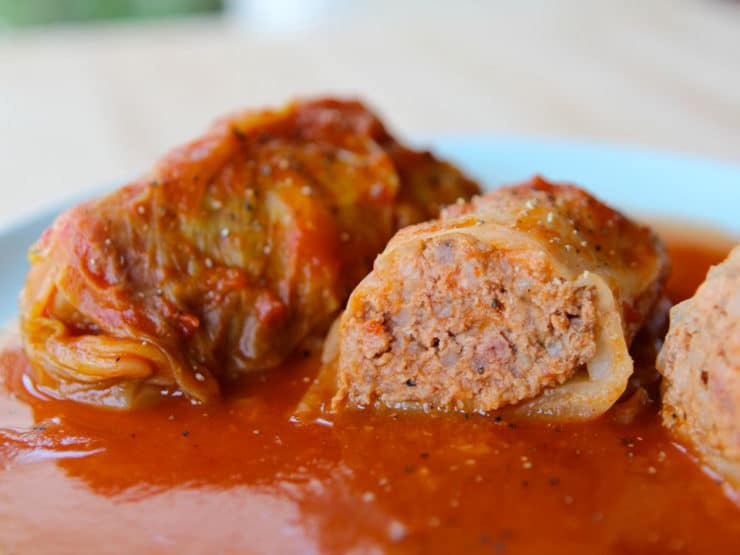
Step-by-Step: How to Make Stuffed Cabbage Rolls (Holishkes)
-
- Soften the cabbage. Rinse the cabbage, and immerse it in a large pot of boiling water until the leaves are soft and pliable. Then, drain the cabbage in a colander and set it aside to cool.
-
- Prepare the filling. Mix all the filling ingredients in a large bowl. Then, adjust the seasonings if needed.
-
- Roll. Place whole cabbage leaves on a cutting board, and pat them dry with a paper towel. Use a paring knife to shave the tough, thick part of the stem. Then, place about 1/4 to 1/3 cup of filling, depending on the size of each leaf, in the center of the cabbage. Fold the base of the leaf up, covering the filing. Then, fold the edge inward and tuck the loose leaf inward, creating a pocket. Repeat, rolling all the leaves.
-
- Heat. In a small saucepan, combine the tomato sauce, diced or crushed tomatoes, lemon juice, brown sugar, and spices. Warm over medium heat until bubbling and fragrant. Then, season to taste.
-
- Combine. Add sauerkraut and chopped cabbage to the bottom of a pot, and spread the mixture out in an even layer. Pour broth on top, and place half of the stuffed cabbage leaves over the mixture, placing them seam side down. Next, layer the tomato sauce on top, and repeat with the remaining cabbage leaves and sauce.
-
- Cook. Bring the mixture to a gentle boil over medium-high heat. Then, reduce the heat to a slow simmer, cover the pot, and cook until the cabbage leaves are tender.
-
- Serve. Carefully remove the cabbage from the pot. I like to use tongs for this! Then, spoon some of the sauce on top, add a generous sprinkle of black pepper, and serve hot.
We are a participant in the Amazon Services LLC Associates Program, an affiliate advertising program designed to provide a means for us to earn fees by linking to Amazon.com and affiliated sites. As an Amazon Associate I earn from qualifying purchases.

Stuffed Cabbage Leaves
Ingredients
- 1 large green cabbage (3.5-4 lbs.)
- 1 pound ground beef, ground chicken, or a mixture (I use half and half)
- 1 cup cooked long grain rice, white or brown
- 1/3 cup finely minced onion
- 2 tablespoons fresh minced dill
- 1 large egg
- 1 1/2 cups sauerkraut divided
- 28 ounces tomato sauce, divided (2 cans)
- 14 ounces diced or crushed tomatoes (1 can)
- 2 tablespoons fresh lemon juice or more to taste
- 2 tablespoons brown sugar or more to taste
- 2 tablespoons tomato paste
- 1 tablespoon paprika
- 1 clove garlic minced
- 1/4 teaspoon allspice
- 1/2 cup chicken stock or water
- Salt and pepper to taste
NOTES
Instructions
- Rinse the cabbage clean, then immerse it in a large pot of boiling water and cook it for 4-5 minutes until leaves are soft and pliable, but not overly soft.

- Drain the cabbage in a colander and let it sit until cool enough to handle.

- Alternatively, you can freeze the cabbage overnight (or up to 3 days). Defrost the cabbage for about three hours. This will make the leaves pliable in the same way that parboiling does.

- Prepare your filling. In a bowl, mix together ground meat, cooked rice, minced onion, minced dill, egg, ½ cup sauerkraut (drained of juice), 1/3 cup tomato sauce, salt and pepper to taste. I use roughly 1 tsp of salt and 1 tsp pepper—kosher meat needs less salt. To test the seasoning of the meat, you can fry up a small portion in a skillet or pop it in the microwave until it’s thoroughly cooked, then taste it. It’s easy to under-season the filling, so err on the side of adding seasoning. Alternatively, if watching your sodium, you can add much less salt during this step, and season the finished dish to taste.Tip: You can make this filling ahead and refrigerate a few hours to overnight; this will allow the flavors to marinate and make it firmer and easier to handle.

- Peel off the large cabbage leaves from the head of cabbage, keeping only the leaves that are whole/intact and big enough to stuff. Chop up the remaining smaller leaves along with the core of the cabbage. Reserve.

- Place your large leaves on a cutting board.

- Take a leaf and pat it dry with a paper towel.

- Shave down the tough, thick part of the stem at the base of each leaf using a paring knife, being careful not to cut through the leaf itself. Repeat process for the remaining leaves.Now it’s time to stuff the leaves. Place a leaf on the cutting board, stem end closest to you. The leaves tend to curl in one direction, so make sure that the curl is facing upward—in other words, it should have a bowl-like shape with edges that curl up, not down.

- Place 1/4 to 1/3 cup of filling at the base of the leaf, centered, about 1/2 inch above the edge. Do not over-stuff the leaves; you want a substantial amount of filling, but a good amount of cabbage leaf around the edges makes for easier rolling.

- Fold the base of the leaf up and over the filling until it’s completely covered.

- Fold the left edge of the leaf inward. Leave the right side of the leaf open.

- Continue rolling the leaf until it’s completely rolled up (with the right end still loose/open).

- Tuck the loose end of the leaf inward, pushing it into the filled center of the leaf.

- This will create a neat package that has a better chance of holding together in the pot.

- Continue this process for the remaining leaves. Depending on how many useable leaves your cabbage has, you may find you have some leftover filling. Simply roll that filling into meatballs; you can place them into the pot along with the stuffed leaves, so you don’t waste anything.

- In a small saucepan, combine the rest of the tomato sauce with the diced or crushed tomatoes, lemon juice, brown sugar, tomato paste, paprika, garlic and allspice. Warm up over medium heat until bubbly and fragrant. Taste the sauce; season with salt and pepper and more brown sugar or lemon, if desired.

- Put remaining 1 cup of sauerkraut and the chopped cabbage leaves/core into the bottom of a pot. Spread the mixture out to create an even layer, then pour ½ cup of chicken broth or water over the top of the leaves.

- Place half of the stuffed cabbage leaves on top of the sauerkraut mixture.

- Pour 1/3 of the warmed tomato sauce over the first layer of stuffed cabbage leaves.

- Put another layer of stuffed leaves on top...

- ...and top with the rest of the sauce.

- Heat the pot over medium high and bring the sauce to a gentle boil. Reduce heat to a slow simmer and cover the pot. Let the cabbage leaves cook for 2-2 ½ hours until the thickest parts of the leaves are tender. Check the pot periodically to make sure it’s not boiling too vigorously—this can make the leaves fall apart. A slow, even simmer works best.When finished cooking, remove the stuffed cabbage leaves from the pot carefully with tongs. Top the stuffed cabbage with some of the sauce and a very generous sprinkle of black pepper. Serve hot. Leaves can be refrigerated for 4-5 days or frozen and reheated before serving.

Nutrition

tried this recipe?
Let us know in the comments!
If you enjoyed this recipe, I’d love it if you left me a star rating and comment below. Also, don’t forget to share and tag us on Facebook and Instagram!
FAQs
I like to serve Jewish stuffed cabbage leaves with a starchy side like olive oil mashed potatoes, classic potato latkes, or smoked paprika potatoes. They’re also great with Borscht or matzo ball soup. Or, for a light meal, I pair them with Israeli salad or a crunchy pickled salad.
Yes, I find that leftover stuffed cabbage leaves keep fresh in an airtight container in the fridge for 4-5 days. Or, you can also store them in the freezer for up to 2-3 months. To serve, thaw in the refrigerator overnight. Then, reheat in the oven, microwave, or in a large skillet over medium heat.
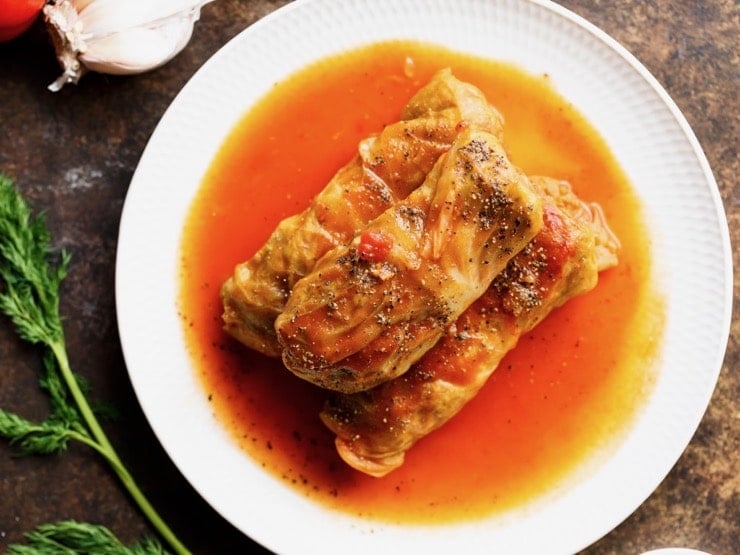


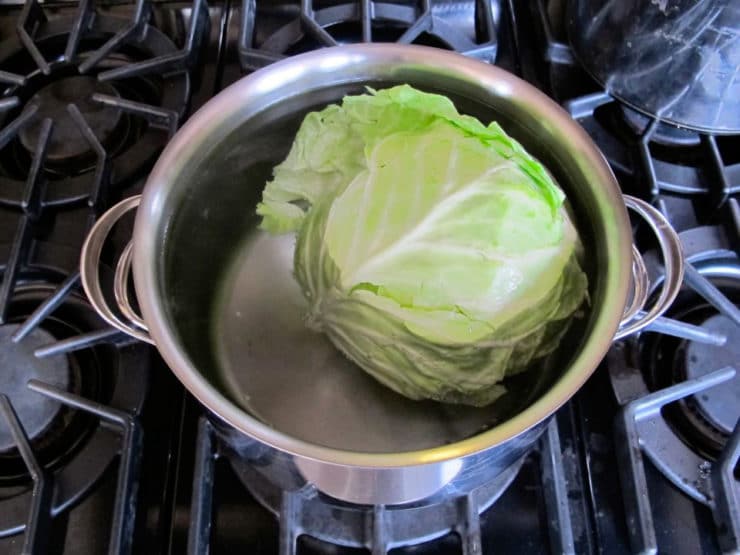
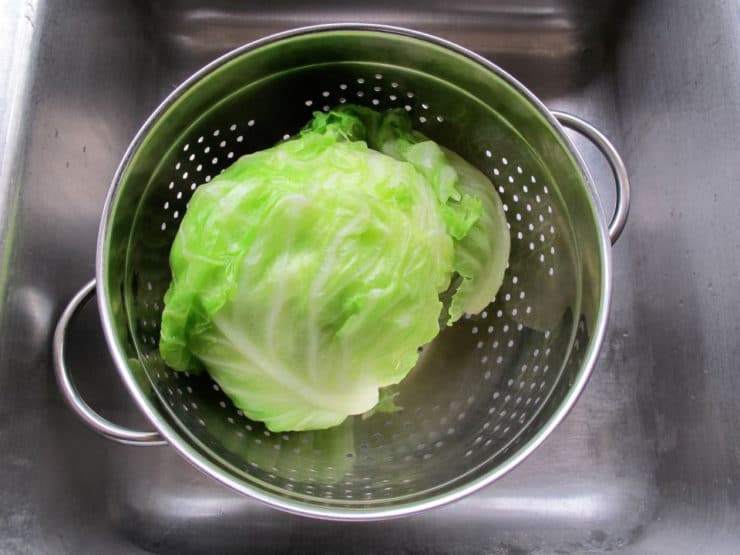
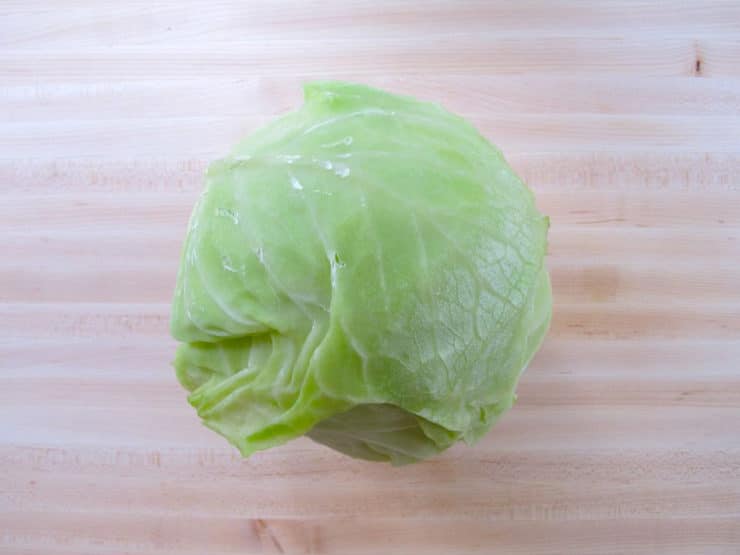
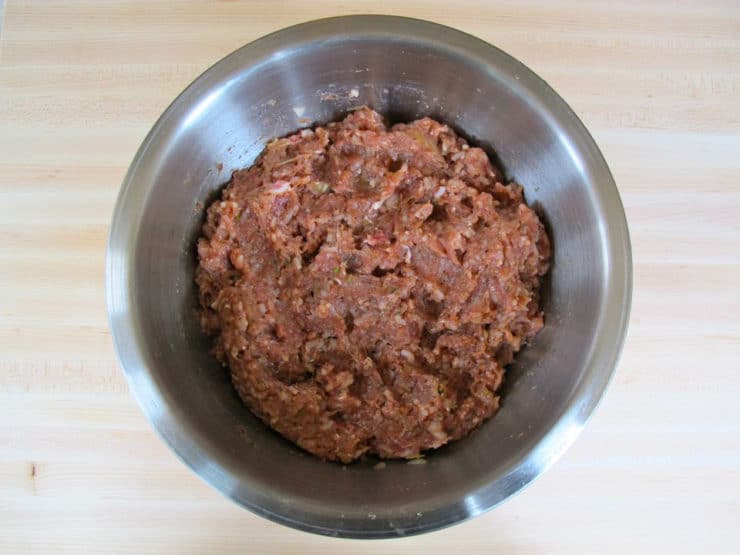
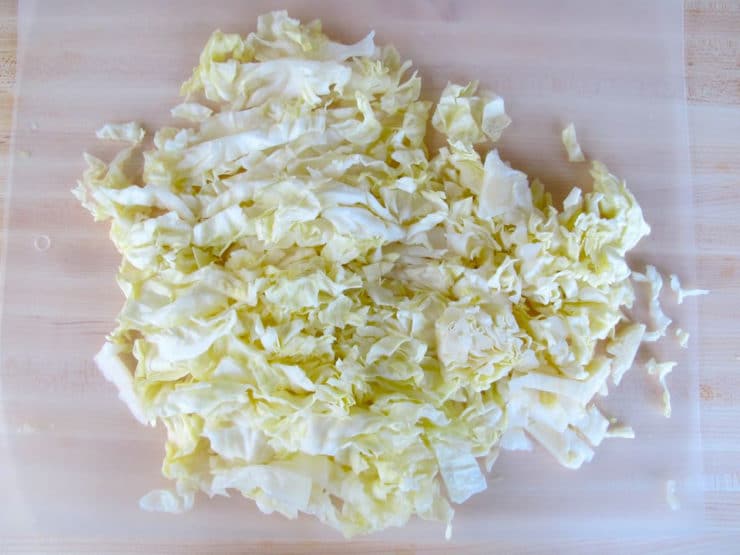

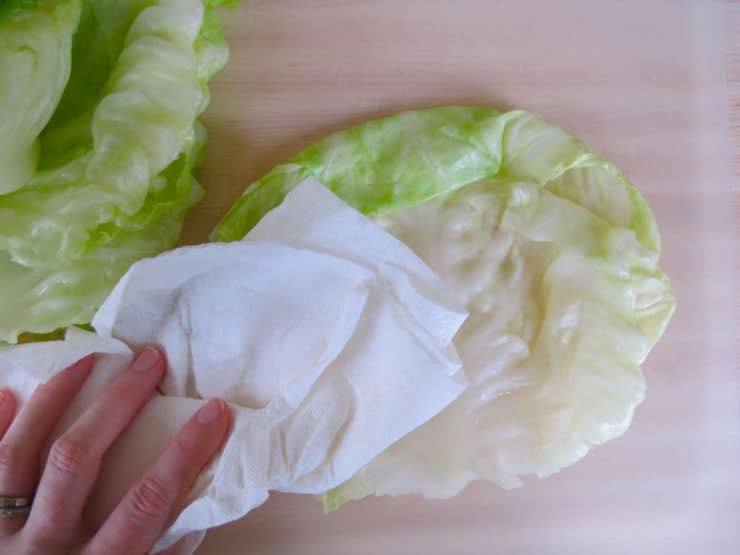
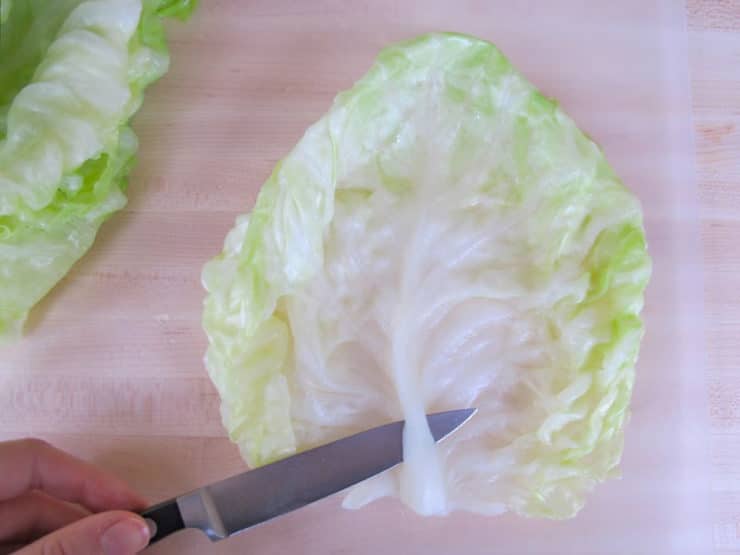

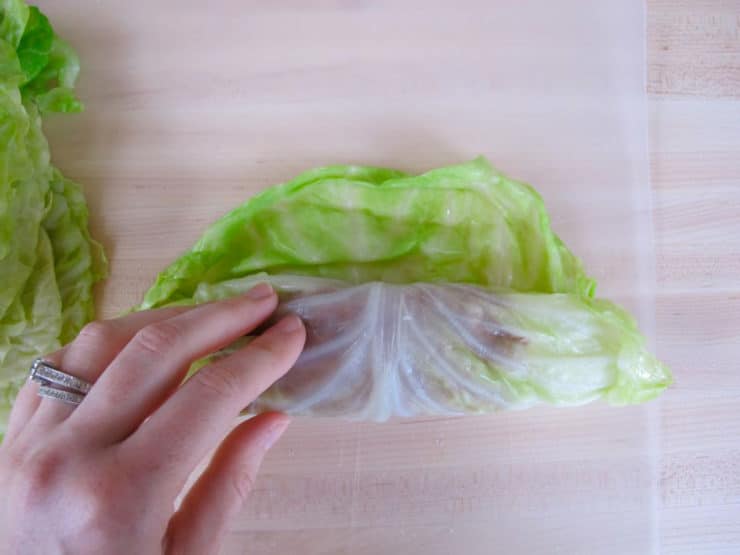


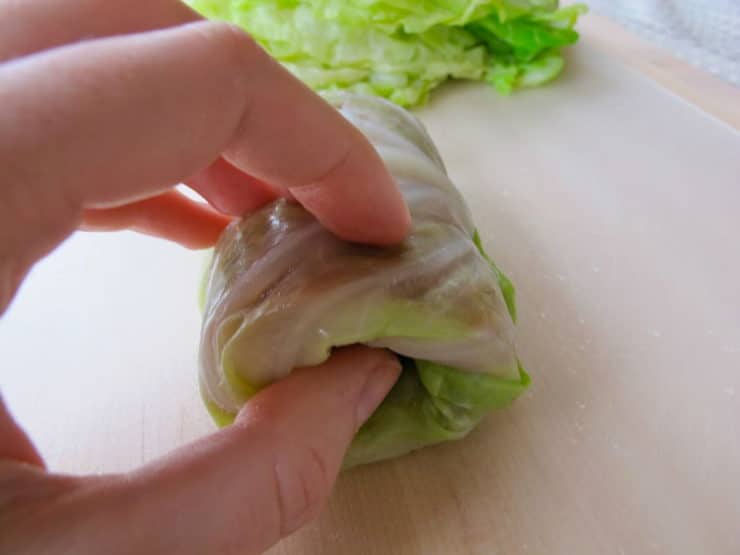
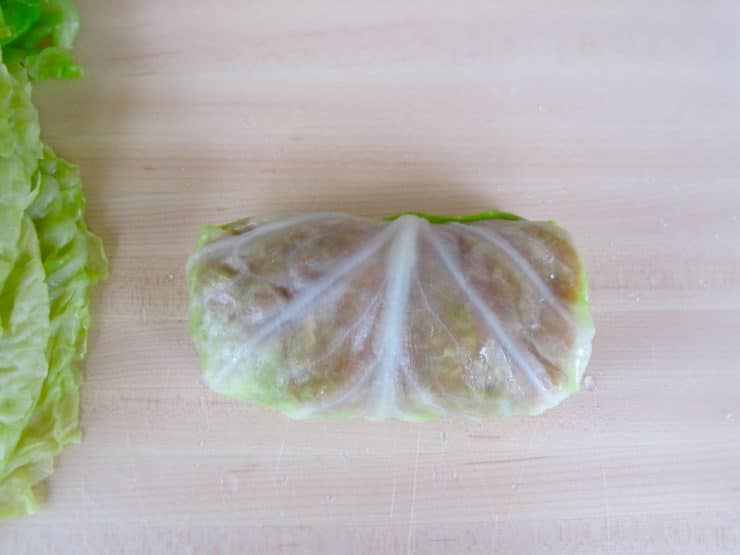

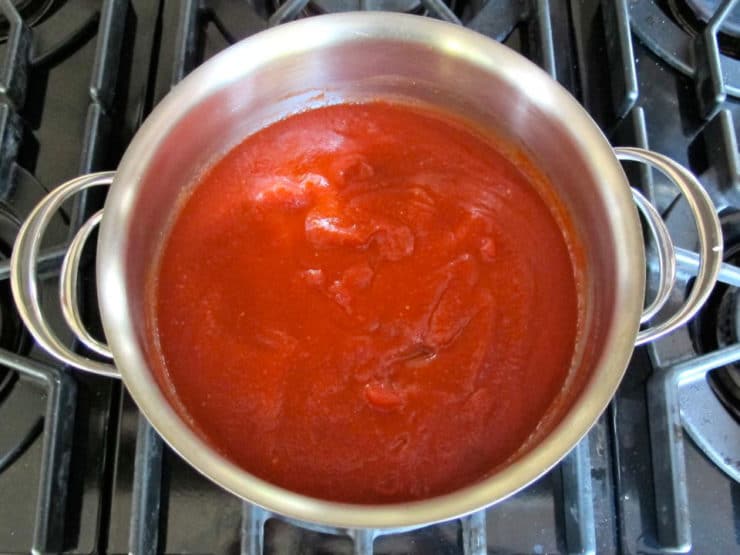
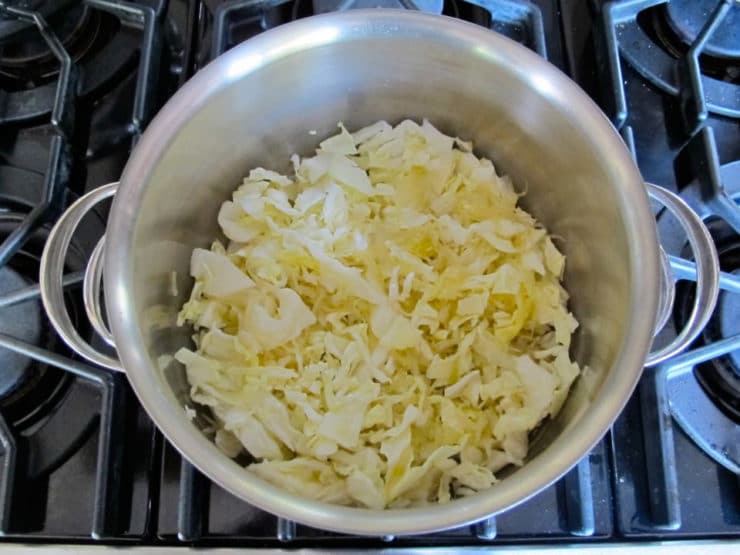

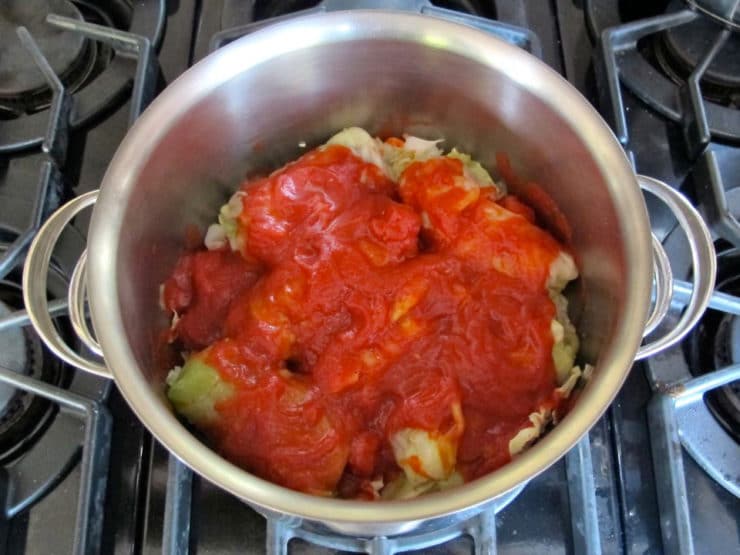
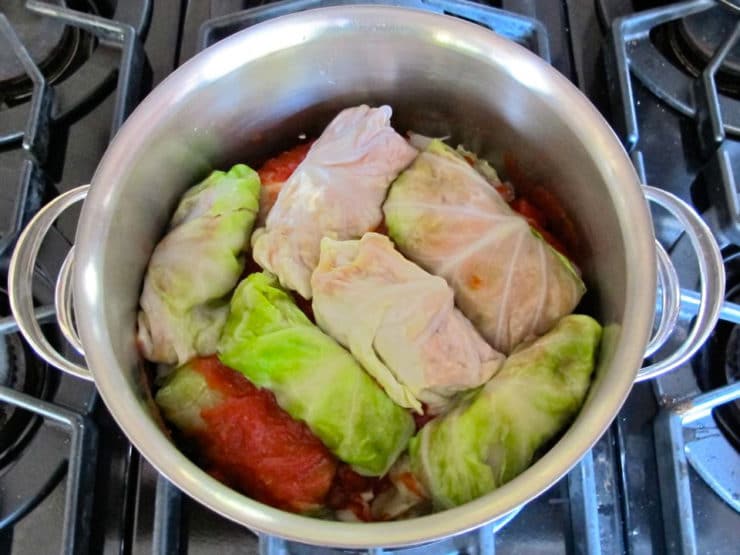
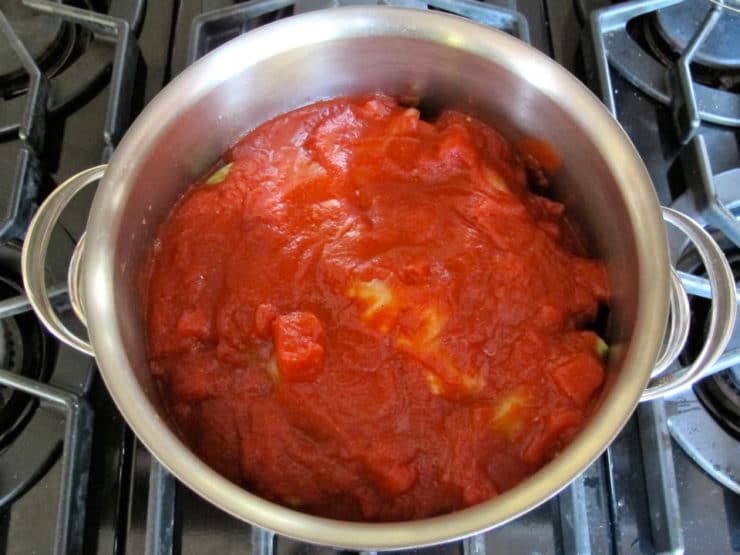


Such a great way to roll these too! The all stayed rolled
I have a huge triple batch of these so I could freeze a bunch for lunches. They’re very good. I added 2 T. extra brown sugar and 3 T. extra lemon to give it more of a sweet & sour kick. Also added a couple bay leaves. When I make these again I’ll use a little less rice. The filling was a bit mushy for me. 4.5 stars.
Another method for the cabbage is to microwave the whole head at full power for 5-6 mins. Remove the soft outer leaves to make your rolls and re-do as you need move leaves to stuff. I’ve never put sour kraut (which i adore), so I’m going to have to try your recipe!
Please try sour salt instead of lemon juice…sour salt is citric acid and provides a great sweet/sour taste..
You just use a tiny bit..to taste..
Absolutely delicious! I scoured the Internet for a recipe that might replicate something of the cabbage rolls I love. Yours looked right, and it was!
I keep a stash of these in my freezer and they are perfect for chilly fall nights. We just had them for dinner and I was reminded to comment and tell you how glad I am you posted this.
It’s very popular in Poland – it’s called gołąbki here. 🙂
Can I substitute quinoa for the rice? How about brown rice?
My Ukranian grandmother and various relatives made/make this.
There’s always some preserve added to the sauce for its Hapsburg empire roots.
Not a super sweet one: my family generally uses cranberry sauce, which I always assumed was a new world stand-in for something locally unavailable (lingonberry?).
They sound yummy. I love your recipes. I’m of Czech descent married to a WASP who I converted to many tasty East European foods. Cabbage rolls are a must for Christmas dinner at our house but I use soured cabbage leaves. I buy my cabbage in October when it is dirt cheap, put it in the freezer,then separate the leaves and soak them in c crock of salted vinegar water for a month or two. I boil the salt and water to dissolve the salt (non-iodized course salt). I also add two or three cloves of crushed garlic to my meat mixture. If I’m feeling lazy, I have been know to use jarred pasta sauce in lieu of making my own. I also cover the top with sauerkraut to give them more of the our taste.
I learned to make Stuffed Cabbage Leaves with my Turkish grandmother and she used to call them “Niños Envueltos” in Spanish (which roughly translates to “Wrapped Children”). No rice, just red meat, and onions with some spices and cooked in a tomato sauce. We adored this dish and as you said, we often find ourselves wishing that our grandparents had written their family recipes down! However, my grandmother never learned how to read or write, but she was an amazing cook and if you wanted to learn a recipe from her you just needed to watch and make your own notes! Thank you for sharing your version! Stay safe! 🙂
My mom is half Slovakian and I used to love when she would make this for us. My husband is a vegan, so I used Impossible burger ground meat (pretty convincing with all the seasoning) and an arrowroot/warm water mixture for the egg. I also added dill as a personal preference. I’m going to try the freezing method for the cabbage next time. Thank you!
Thank you for posting your modification Corinne, I’m sure it will be helpful to others!
My Mom (full blooded Hungarian) used to make this all the time. I’m going to follow (loosely) your recipe outside over the fire pit as her Father used to make it. Your recipe sounds wonderful! Can’t wait to get cooking!
How cool! Love that you’re cooking it over the fire pit.
Just put the stuffed cabbage in the pot (beef only, not a chicken / beef mix) and it looks good. Can’t wait to eat it in 2 hours.
Thank you so much,
Paul
Enjoy Paul!
I made these but I haven’t tasted them yet-they’re cooking right now. The last time I made cabbage rolls I froze the head of cabbage and when I defrosted it it worked perfectly. I think that works better than steaming a head of cabbage because the inside doesn’t get done and I needed those leaves…. however I did try that this time. I really liked the idea of using sauerkraut and dill in the filling and then using the reserves in the bottom of the pot before layering in the rolls and sauce. Finally, As a variation I added in two handfuls of raisins….I can’t rate it yet but I will report back to everyone. I also made this in a pressure cooker1
I can’t wait to make these. My Mom was from Upstate New York (move to Texas, 1952 married a Texas Cotton Farmer, 1957 & here I am) of German decent on her paternal side. I remember her making these, yet have never found a recipe in all of her cookbooks!!!
I am going to make these for the very next Cold snap that we have!!! Thank you again!
love cabbage rolls,will take your suggestion of using cooked rice I use raw.A good tip re the cabbage sprinkle it with water put the whole one in the micro wave,trimming core first you will find this an easier method than boiling, much quicker.B.T.W I pressure cook
thanks for being in touch all the way to Australia.
best wishes GRETA
I have a question about the amount of the tomato sauce. It says: 28 oz tomato sauce, divided 2 cans
Does that mean 2x28oz or are you saying to divide one 28oz can, because you use 1/3 cup in the filling?
Inge
28 ounces is two standard 14 ounce cans. It means you are using the total contents of two standard cans (28 ounces total), and the contents of the cans is divided in different amounts throughout the recipe.
Yes, you are right. This is the perfect fall weather food.
I was wondering if you ever tried cooking these in a slow cooker. Would be very convenient if you could prepare them the night before and then pop them in the slow cooker in the morning.
thanks
Inge
Can I substitute meat for tofu?
I think if you’re going this route, the soy ground beef alternative would probably work better as a substitute. I haven’t tried either option though.
Hey! I just commented above that I made a version for my husband with Impossible ‘ground meat’ and it worked out really well!
Can you make a vegan stuffing with the same sauce?
I posted above that I used Impossible burger meat and arrowroot/warm water mixture for the egg. It worked out very well!